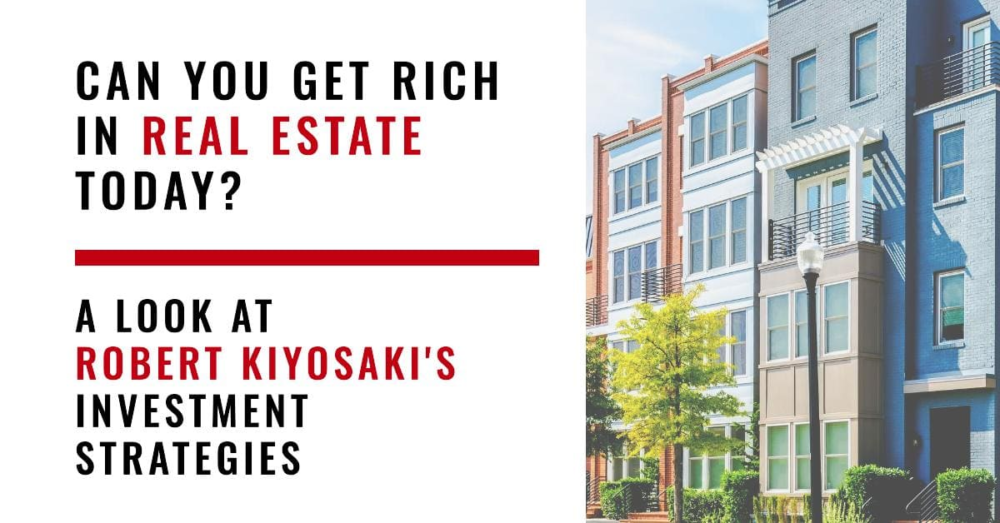Robert Kiyosaki, the renowned author of “Rich Dad Poor Dad,” has been a significant influence in the world of financial education, particularly in real estate investing. His strategies have helped many to navigate the complex landscape of property investment, building wealth through smart and calculated decisions. As we find ourselves in 2024, it’s natural to question the relevance and effectiveness of these strategies in the current economic climate.
Kiyosaki’s approach to real estate investing is grounded in two core principles: the importance of employment trends in driving real estate decisions and the avoidance of high-end properties during times of financial uncertainty. These principles have served as a compass for investors looking to build a resilient portfolio that can withstand economic fluctuations.
The first principle emphasizes the correlation between employment stability and real estate demand. Areas with robust employment opportunities tend to have a higher demand for housing, making them prime targets for real estate investments. This principle is particularly pertinent in the aftermath of the COVID-19 pandemic, which saw significant job losses in industries like tourism and oil. Kiyosaki advises investors to focus on regions that show resilience to such economic shocks, where the employment landscape remains stable or is on an upward trajectory.
The second principle advises against investing in luxury properties during uncertain times. High-end properties are often the first to experience a downturn when the market corrects itself. Instead, Kiyosaki suggests targeting mid-priced properties, which are more likely to retain tenants even during economic downturns. This strategy aims to provide a safety net by investing in properties that appeal to a broader demographic, ensuring consistent rental income.
In the context of 2024, these principles still hold significant value. The real estate market continues to be influenced by employment trends, and the middle-class housing sector remains a safe haven for investors. Kiyosaki’s advice to buy properties below market value and focus on those that offer improvement potential remains a sound strategy. By doing so, investors can increase the value of their properties and sell them for a profit, a concept that aligns with the BRRRR method (Buy, Rehab, Rent, Refinance, Repeat) popularized by Kiyosaki.
Is Real Estate Still King? Kiyosaki’s Strategies Put to the Test?
Robert Kiyosaki‘s influence on the real estate investment landscape continues to be profound as we navigate through 2024. His two-step formula for investing in real estate remains a cornerstone for those looking to build wealth in this sector. The formula, which emphasizes purchasing properties below market value and improving them for profit, is a testament to Kiyosaki’s pragmatic and value-driven approach to investing.
The first step of Kiyosaki’s strategy involves identifying properties that are undervalued. This requires a keen eye for market trends and the ability to spot potential in properties that others may overlook. For instance, in a market where the average home price is $539,524, Kiyosaki’s method would focus on properties priced significantly lower, providing a margin for improvement and subsequent profit.
The second step is about enhancing the value of these properties through strategic improvements. This could range from cosmetic upgrades to complete overhauls, depending on the property’s condition and the investor’s budget. The goal is to increase the property’s market value and appeal, thereby maximizing the return on investment. A study by Today’s Homeowner highlighted that the average return on investment for remodeling projects stands at 69%, underscoring the potential profitability of this approach.
However, it’s important to note that while Kiyosaki’s principles provide a solid framework, the real estate market in 2024 presents new challenges and opportunities. The economic landscape has shifted, with factors such as technological advancements, demographic changes, and evolving consumer preferences impacting the market. Investors must adapt Kiyosaki’s strategies to align with the current market dynamics.
For example, the rise of remote work has altered the traditional employment-driven real estate model. Investors may now find opportunities in areas that were previously overlooked due to their distance from employment hubs. Additionally, the growing importance of sustainability and energy efficiency in properties is another factor that investors must consider when implementing improvements.
Moreover, Kiyosaki’s recent commentary on the real estate market suggests a cautious approach towards high-end properties, which are often the first to be affected in a market downturn. Instead, he advocates for investing in mid-priced properties that cater to a broader demographic, ensuring a more stable rental income during economic uncertainties.
In conclusion, while the core principles of Kiyosaki’s real estate investing strategies remain relevant, investors in 2024 must be agile and informed. They should continuously evaluate the market, stay updated with the latest trends, and be ready to pivot their strategies as needed. By doing so, they can leverage Kiyosaki’s wisdom while tailoring their investments to the unique conditions of the current real estate market. As always, it’s wise to seek professional advice and conduct thorough research before embarking on any investment venture.



